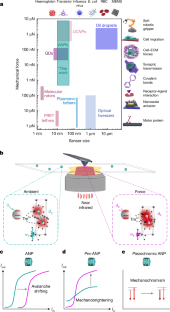2025-01-09 米国国立再生可能エネルギー研究所 (NREL)
<関連情報>
- https://www.nrel.gov/news/press/2025/improving-tandem-efficiency-can-lower-solar-photovoltaic-module-cost-per-watt.html
- https://www.cell.com/joule/abstract/S2542-4351(24)00466-5
ペロブスカイト/シリコン・タンデム太陽電池の技術経済分析 Technoeconomic analysis of perovskite/silicon tandem solar modules
Jacob J. Cordell∙ Michael Woodhouse∙ Emily L. Warren
Joule Published:November 15, 2024
DOI:https://doi.org/10.1016/j.joule.2024.10.013
Graphical abstract
Context & scale
Tandem photovoltaic (PV) modules enable a higher energy yield than their traditional single-junction counterparts. Higher energy yield is possible because tandem modules use multiple types of solar cells to convert more energy from light to electricity per unit area than is possible with a single-cell subcomponent. At the time of writing, hundreds of companies, research firms, and governments are invested in commercializing tandem modules to add to electricity grids. However, very few companies have functioning modules larger than 1 m2.
Small prototypes (<1 cm2) have demonstrated efficiencies well over 30%, surpassing the limits of traditional technologies, but challenges remain in scaling these high efficiencies to standard module sizes around 2 m2. The main challenge lies in reliability: getting a module to last 20–50 years and understanding the degradation mechanisms that nullify a module’s conversion efficiency. Another challenge lies in understanding the economic potential of tandem modules and the milestones needed to compete with existing commercial designs.
This work identifies pathways for tandem modules to compete in cost with incumbent solar PV modules, which already make up the largest generating capacity added to global grids each year. Commercializing tandem modules offers an opportunity to expedite the transition to renewable and sustainable energy sources and improve the value of the energy generating technologies we deploy.
Highlights
•30% MHP/Si modules (US made) have a calculated minimum sustainable price of $0.35/W
•Tandems can receive higher US manufacturing incentives than non-tandem counterparts
•Two- and four-terminal architectures face similar manufacturing costs depending on design
•Doubling factory output provides the same cost reduction as a 2.5% module efficiency increase
Summary
Tandem photovoltaic (PV) modules offer an opportunity to improve the efficiency and energy yield of available solar resources compared with single-junction devices. We present a cost model and sensitivity analysis of perovskite/silicon (Si) tandem modules to understand how design choices impact overall module costs. We find a minimum sustainable price (MSP) of $0.428/WDC for our baseline two-terminal design and $0.423/WDC for our baseline four-terminal design, each at a module efficiency of 25% and module production of 3 GW per year in the United States. We find that the choice of Si cell architecture, overall module efficiency, and factory throughput have the most significant impacts on cost and competitiveness. The dynamic model provided is designed for researchers, companies, and interested individuals to use and edit as needed to better understand the trade-offs among PV module technologies and enable targeted research to improve module design and fabrication.




